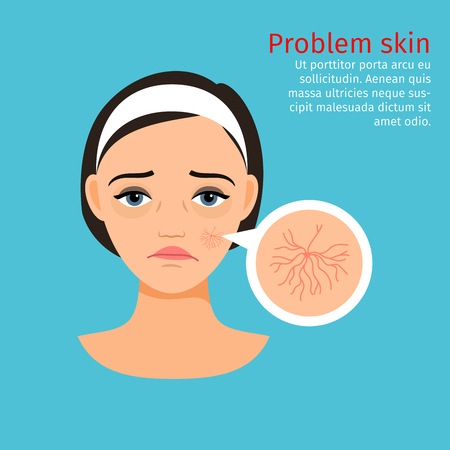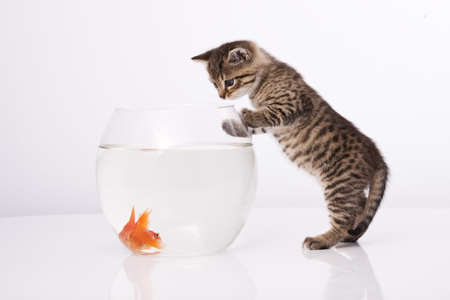Understanding Dropsy: What Every Fish Keeper Should Know
Dropsy is a term that sends shivers down the spine of any dedicated fish keeper. It’s not a disease in itself, but rather a symptom indicating that something serious is going wrong inside your fish. Characterized by a swollen, bloated body and raised scales—often described as having a “pinecone” appearance—dropsy is commonly caused by internal infections, most often bacterial. In American home aquariums, where we strive to create healthy environments for our aquatic pets, understanding dropsy is crucial because it signals underlying issues with water quality, nutrition, or even stress factors affecting your fish. Early recognition and intervention can make all the difference between saving a beloved pet and dealing with loss. Whether you’re new to aquarium care or have years of experience, knowing what dropsy looks like and why it occurs helps you take quick action and maintain a thriving tank.
2. Common Causes of Dropsy in Fish Tanks
Understanding the root causes of dropsy is essential for prevention and management in any home aquarium. Dropsy isn’t a disease itself, but rather a symptom triggered by underlying problems within the tank environment or the fishs own biology. Below, we explore the most common factors that contribute to dropsy among aquarium fish in the United States.
Environmental Triggers
Water quality is a top concern for American fish keepers. Poor water conditions—such as high ammonia, nitrite, or nitrate levels—can stress your fish and compromise their immune systems. Regular testing and timely water changes are crucial. Here’s a quick overview of ideal versus risky water parameter levels:
| Parameter | Ideal Range | Risk Level (Dropsy Trigger) |
|---|---|---|
| Ammonia (NH3) | 0 ppm | >0.25 ppm |
| Nitrite (NO2-) | 0 ppm | >0.25 ppm |
| Nitrate (NO3-) | <20 ppm | >40 ppm |
| pH | 6.5 – 7.5 (species dependent) | <6.0 or >8.0 |
| Temperature | 72–78°F (22–26°C) for most tropical species | <68°F or >82°F (for extended periods) |
Dietary Factors
A balanced diet is critical for fish health and resilience against disease. Overfeeding, feeding poor-quality foods, or lacking variety can lead to nutritional deficiencies and weaken your fish’s immune response, making them more susceptible to infections that cause dropsy.
Stress-Related Issues
Stress is another major contributor to dropsy in home aquariums. Stressors like overcrowding, incompatible tank mates, sudden environmental changes, or frequent handling can all suppress a fishs natural defenses. American hobbyists often overlook the importance of a calm and stable tank environment—routine maintenance and careful observation go a long way in prevention.
Bacterial and Parasitic Infections
Dropsy is commonly triggered by bacterial infections, especially when environmental or dietary stressors are present. Opportunistic bacteria, such as Aeromonas species, thrive in tanks with poor water quality or stressed fish. Parasitic infestations can also damage internal organs and create secondary infections leading to dropsy symptoms.

3. Spotting Symptoms Early: How to Recognize Dropsy
When it comes to dropsy in fish, catching the problem early can make all the difference. The first signs are often subtle, but developing an eye for these warning signals gives you a real advantage in keeping your aquarium healthy. Visually, look for a swollen or bloated abdomen, which is a classic symptom of dropsy. One tell-tale sign is “pineconing,” where the fish’s scales stick out from the body, resembling the surface of a pinecone. This occurs as fluid builds up under the skin and forces the scales outward.
But physical changes aren’t the only clues. Behaviorally, affected fish may become lethargic, spending more time near the bottom of the tank or hiding away from other fish. You might also notice a loss of appetite or sluggish swimming patterns. Their fins could appear clamped and they may breathe more rapidly than usual, as internal pressure makes it harder for them to move and function normally.
It’s important to note that dropsy isn’t a disease itself—it’s actually a symptom of underlying issues like bacterial infections or organ failure. Because of this, acting fast at the first sign of trouble can help you isolate the sick fish and prevent potential spread to others. Being observant with daily check-ins on your aquarium can give you peace of mind and allow for prompt treatment if needed.
If you’re unsure whether your fish is showing early symptoms, take photos and compare them over a few days to spot any swelling or scale changes. When in doubt, consult with an aquatic vet or experienced aquarist; sometimes, what looks like minor puffiness could be the start of something serious. By learning these key visual and behavioral cues, you’ll be ready to step in quickly, giving your fish their best chance at recovery.
4. Effective Prevention: Best Practices for Healthy Aquariums
Keeping your aquarium fish safe from dropsy starts with smart, proactive care and tank management. American hobbyists know that a healthy environment is the foundation for disease prevention. Below, we break down essential habits and actionable steps to help minimize the risk of dropsy, so your fish can thrive year-round.
Maintain Consistent Water Quality
Poor water quality is one of the main contributors to stress and illness in aquarium fish, including dropsy. Regularly test water parameters and perform routine maintenance to keep things stable.
| Water Parameter | Ideal Range | Testing Frequency |
|---|---|---|
| Ammonia (NH3/NH4+) | 0 ppm | Weekly |
| Nitrite (NO2-) | 0 ppm | Weekly |
| Nitrate (NO3-) | < 20 ppm | Weekly |
| pH Level | 6.5 – 7.5 (species-dependent) | Bi-weekly |
| Temperature | 72–78°F (species-dependent) | Daily Check |
Develop Proactive Habits
- Quarantine New Fish: Always quarantine newcomers for at least two weeks before introducing them to your main tank to prevent hidden infections from spreading.
- Avoid Overcrowding: Overstocked tanks lead to stress and poor water quality. Stick to recommended stocking levels for your tank size and species.
- Diversify Diet: Feed your fish a balanced diet with high-quality flakes, pellets, frozen, and live foods. Avoid overfeeding and remove uneaten food promptly.
- Curb Stressors: Maintain a calm environment—avoid sudden changes in lighting or temperature, keep noise levels down, and provide plenty of hiding spots.
- Schedule Routine Tank Maintenance: Perform partial water changes (about 25% weekly), clean substrate, and check filter functionality regularly.
Create a Supportive Community for Your Fish
The social dynamics within a tank can influence fish health. Choose compatible species and avoid aggressive pairings. A harmonious tank reduces injuries and stress-related illnesses like dropsy.
The American Hobbyist’s Checklist for Dropsy Prevention
- Test water parameters weekly and act quickly if readings are off.
- Quarantine all new arrivals without exception.
- Aim for steady routines—fish thrive on consistency.
- Treat tap water with dechlorinator before every use.
- If you notice odd behavior or symptoms, isolate affected fish immediately for closer observation.
Aquarium Health is a Daily Commitment
Preventing dropsy isn’t about reacting when something goes wrong—it’s about building reliable habits into your everyday care routine. By following these best practices tailored for American aquarists, you set your fish up for long-term wellness and vibrant aquatic life.
5. Treatment Options: Supporting Your Fish Through Recovery
When it comes to treating dropsy, a proactive and attentive approach is key. Here’s a breakdown of effective treatment strategies that can help give your fish the best chance at recovery—whether you’re caring for them at home or seeking professional help.
At-Home Care: First Steps
Quarantine the Affected Fish: Immediately separate any fish showing symptoms into a hospital tank. This reduces stress and prevents potential spread to other tankmates.
Optimize Water Quality: Freshwater changes are non-negotiable. Maintain pristine water with frequent partial changes (25-50%), and closely monitor ammonia, nitrite, and nitrate levels using reliable test kits.
Boost Oxygenation: Add an air stone or increase filtration to make sure your sick fish gets plenty of oxygen—this supports weakened systems as they fight infection.
Epsom Salt Baths: Dissolve aquarium-safe Epsom salt (magnesium sulfate) at 1-3 teaspoons per 5 gallons in the quarantine tank. This can help draw out fluids and ease swelling.
Feeding and Medication
Medicated Foods: If your fish is still eating, offer antibacterial medicated food formulated for aquatic pets. It’s one of the most effective ways to deliver medication directly to the source.
Antibiotic Treatments: Dropsy is often bacterial, so consider broad-spectrum antibiotics like kanamycin or tetracycline. Always follow dosage instructions carefully—overuse can harm your fish or beneficial bacteria in the tank.
High-Quality Diet: Supplement with vitamin-rich foods to boost immunity. Avoid overfeeding, which can worsen water quality.
Professional Intervention
If at-home treatments aren’t working, or if you’re unsure about diagnosis, consult an exotic animal vet or aquatic specialist. They may recommend prescription-strength medications or more advanced care protocols. Sometimes, they’ll suggest injectable antibiotics or more targeted therapies—especially if your fish is valuable or part of a breeding program.
A Note on Prognosis
Dropsy is notoriously difficult to treat, especially in later stages. Early intervention offers the best hope for recovery, but even with the best care, some cases may not resolve favorably. Focus on comfort and quality of life during treatment.
Support for Other Tank Inhabitants
While treating your sick fish, don’t forget about the rest of your aquarium community! Keep up with water changes, reduce stressors (like loud noises or sudden light changes), and monitor all inhabitants closely for early warning signs.
6. When to Seek Expert Help: Finding a Local Aquatic Vet
Even with the best care, sometimes dropsy in fish can progress beyond home treatment. Knowing when to involve a professional is crucial for your pet’s health and peace of mind.
Recognizing When Veterinary Intervention Is Needed
If your fish shows severe symptoms—such as extreme bloating, pineconing scales, listlessness, or difficulty swimming—and home remedies aren’t working within a few days, it’s time to consult an aquatic veterinarian. Additional warning signs include rapid breathing, open sores, or multiple fish affected at once. If you’re unsure whether your fish’s condition is worsening or stabilizing, err on the side of caution and reach out for expert advice.
Why Professional Diagnosis Matters
Dropsy can mimic other illnesses, so a proper diagnosis from a qualified vet ensures the correct treatment plan. A vet may run water quality tests, recommend lab work, or prescribe medications that aren’t available over the counter. Early intervention by a specialist can greatly improve your fish’s chances of recovery and prevent outbreaks in your tank.
How to Find an Aquatic Vet Near You
Finding an aquatic vet in the U.S. can feel daunting, but there are several resources at your fingertips:
- Ask Your Local Pet Store: Staff at reputable aquarium shops often have a list of local vets with aquatic experience.
- Check Online Directories: The American Association of Fish Veterinarians (AAFV) and the American Veterinary Medical Association (AVMA) offer searchable databases for aquatic specialists.
- Join Local Aquarium Groups: Community forums or Facebook groups dedicated to aquarists can provide personal recommendations for trusted vets in your area.
- Contact Nearby Zoos or Aquariums: These facilities typically employ or have connections with aquatic animal veterinarians and may be willing to refer you.
Pro Tip: What to Ask Before Your Visit
When contacting a potential vet, ask if they have specific experience treating ornamental fish and what diagnostic services they offer. Bringing a sample of your tank water and detailed notes about recent changes or treatments will help them assess the situation quickly.
Remember: quick action and reaching out to an expert can make all the difference when it comes to preventing long-term harm from dropsy. Building a relationship with an aquatic vet is a smart move for any dedicated fish keeper in America.

